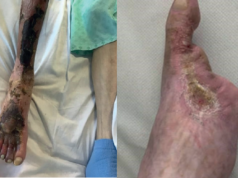
A systematic review published in Wound Management and Prevention did not find evidence of the in vivo effectiveness of Plantago major—a medicinal plant that has been used for centuries to treat various health conditions, including wounds— for wound healing. Fernanda Cássia Israel Cardoso (University of Campinas, Campinas, Sao Paulo, Brazil) and colleagues conclude: “More rigorous preclinical studies with adequate sample sizes are required to identify the best concentrations and formulations, as well as increase understanding about the mechanisms of action of P major in wound healing.” Heterogeneity in study design prevented the use of meta-analysis techniques, they claim.
Contextualising their research, Cardoso et al write: “The search to elucidate the potential therapeutic effects of medicinal plants has been expanding worldwide. Data from the Global Report on Complementary and Traditional Medicine showed that 88% of World Health Organisation [WHO] member states recognise the use of complementary and traditional medicine as essential and are developing guidelines for the creation of policies, laws, regulations, and programmes that involve the use of medicinal plants in health systems. Due to their great potential to treat and prevent diseases, medicinal plants have been used traditionally in wound management. In Brazil, medicinal plants are mainly used in primary health care because of a considerable lack of availability of new technologies to treat wounds.”
The investigators therefore set out to assess the effectiveness of the topical use of P major in healing skin wounds in animal models. They conducted a systematic review following the Preferred Reporting Items for Systematic Reviews and Meta-Analyses (PRISMA) guidelines. They searched seven electronic databases (Virtual Health Library, Public/Publisher MEDLINE, Scopus, Web of Science, Embase, Cumulative Index of Nursing and Allied Health Literature, and CAB Direct) for controlled studies published in English from January 2006 to March 2020. Of the 176 studies identified using these search strategies, only four met the inclusion criteria.
The primary outcome measure was the wound healing rate; the secondary outcome measure was histological scoring of P major in wounds.
All studies used P major in an oily or gel base, and concentrations ranged from 5% to 50%; one study compared a 20µg dose to a 40µg one. Cardoso et al found that the best response in wound contraction rate occurred with 10%, 20%, and 50% concentrations when compared with control groups.
Describing these findings, the authors say: “This systematic review sought current evidence in preclinical studies on the use of P major and its effectiveness in tissue repair. The results showed that the lack of rigorous methodological study designs, as well as varying concentrations and delivery methods of P major, made it impossible to systematically analyse the data or draw conclusions about the effectiveness of P major in the healing of in vivo wounds.”













